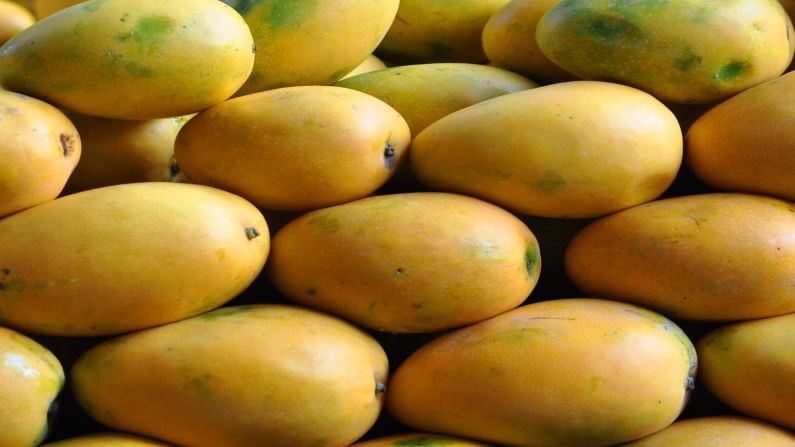Mango mania, Murshidabad style
The seat of the last independent nawabs of eastern India is famous for more than 200 varieties of mangoes that were created through exotic means from the time of the Mughals
- Avijit Ghosal
- Last Updated : May 22, 2021, 11:33 IST

Summer, a season of sweat, grime and heat strokes, is also a time for beauty and temptations. Nowhere is this contrast better illustrated than in heaps of ripe, golden yellow mangoes attracting perspiring shoppers in markets to pick up the fruit after the weekly green groceries is done.
In many markets in cities, citizens elbowing into a crowd of buyers to reach for the fruit, pick up one and enjoy the smell before ordering a few kilos is common sight. Choosing mangoes is an art and to the afficionado, prosaic hindrances such as rising inflation or denied dearness allowance can hardly be an obstacle if Ratnagiri Alphonso or Bengal’s Himsagar or Varanasi variety of Langra beckons.
History
However, the tryst of Bengal’s Murshidabad district with mangoes surpasses the mango mania witnessed anywhere in the country. The town of Murshidabad was home to nawab Siraj-ud-Daulah, (1733-1757) whom Robert Clive (1725-1774) defeated in the battle of Plassey in 1757 to establish the British Raj in the subcontinent. The cultivation of exotic mango varieties in Murshidabad dates back far beyond to the days of nawab Siraj-ud-Daulah and nawab Murshid Quli Khan (1660-1727).
For a few decades, Murshidabad was the seat of power in eastern India, where the nawab used to rule over the vast region of Bengal, Bihar and Odisha. In those days Bengal would also include today’s Bangladesh. Among the luxuries that the nawabs indulged in was exotic varieties of mangoes.
Some of these delicacies are Nawab Pasand, Begum Pasand, Kohitur, Kalapahar, Chandan Kosha, Champa, Mohan Bhog, Bimli, Anupam, Bhabani Chauras, Bira, Dil Pasand, Dudhia, Mirza Pasand. A few of these varieties were results of nawabs encouraging grafting and cross-breeding different varieties that lent them delicate flavours.
Kohitur and Kalapahar gave birth to folklore. Kalapahar is a variety that was popular with the nawabs, especially Murshid Quli Khan, who transferred the seat of power from Dhaka to Murshidabad in 1704, and after whom Murshidabad was named. Siraj-ud_Daulah’s maternal grandfather Alivardi Khan (1671-1956), too, were fond of this mango.
Apparently, Kalapahar derived its name from the feature that it turned black when it turned ripe. Before he passed away about two years ago, Reza Ali Khan, a descendant of nawab Mir Jafar used to say that perhaps not a single Kalapahar tree is alive. He used to say that it was juicy and sweet-and-sour in taste. Reza Ali Khan himself had a few trees that bore exotic varieties that he would guard zealously.
But the care that Kohitur demanded was quite remarkable. This variety is ideally sliced with a wooden knife since touch with metal interferes with its delicate taste. It would be preserved in a bed of cotton.
Nawab Faiyaz Ali Khan, a sixth generation descendant of nawab Mir Jafar, was a connoisseur of mangoes. He painstakingly built a mango orchard at Jafraganj and planted the Kohitur variety there. Only a few Kohitur mango trees are still there in the orchard. But the mangoes are not sold commercially.
One or two families of Murshidabad who have Kohitur trees would go to fanatic extent to nurture the fruit when it ripened. They would hang jute bags under the trees so that the fruits don’t fall to the ground. None was allowed to touch a Kohitur with finger to pluck it.
Varieties
Apparently, a few varieties of the mangoes were also named after a gardeners and tax officers of the nawabs. A particular variety Enayet Pasand was named after Enayet Khan, who was a favourite of a nawab. Apparently, another variety Bimli was named after a woman by the same name who tended the nawab’s garden.
The Champa variety had the aroma of Champa flower and its colour was like gold.
The taste of Chandan Kosha was like sandal wood and it took the colour of sandalwood colour when it became ripe.
The most unfortunate part is, most of the exotic varieties of mango are now matters of academic discussion. Apart from a few varieties like Kohitur and Begum Pasand, most types have become extinct. Once in a blue moon would one get to see a prohibitively priced Kohitur displayed at a mango festival in some 5 star hotel. It would lie in a bed of cotton as connoisseurs would walk up to it with admiring looks and walk away with a sigh.
We, the lesser mortals, have to be content with Himsagar, Langra and Alphonso, the queens of a plebian age.
In the absence of nawabi delicacies, for the moment as the mercury climbs up, we can pick a juicy Himsagar or Alphonso, cut it in small cubes, freeze them with vanilla ice cream and enjoy at noon.
Download Money9 App for the latest updates on Personal Finance.

